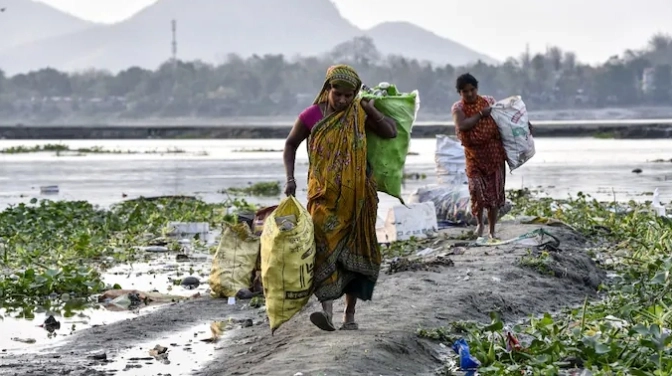
India has made progress in reducing extreme poverty, but many people still struggle to meet their basic needs. According to the World Bank, one in four Indians—over 35 crore people—live below the minimum level needed for a decent life.
They may no longer fall under the traditional “extreme poor,” but they still lack access to basic needs like nutritious food, safe housing, healthcare, and education.
A World Bank spokesperson told IndiaToday that while India’s poverty levels have declined, the way poverty is measured has also changed in recent years.
“There is corroborating evidence that household welfare in India has improved since 2011, including declining trends in multidimensional poverty, rising social transfers, and growth in per capita GDP,” the spokesperson said. “At the same time, the 2022–23 household survey introduced several improvements in questionnaire design and implementation compared to 2011–12, which are likely to have enhanced the measurement of household expenditures.”
Official data shows that only 5% of Indians now live in extreme poverty, based on the $3-per-day global benchmark (adjusted for purchasing power parity or PPP). This marks a steep drop from 27% in 2011. Nearly 26.9 crore people moved out of extreme deprivation in just over a decade.
But the World Bank says the $3/day threshold is no longer appropriate for India’s stage of development. “$3/day PPP is not the appropriate threshold for India,” the spokesperson said. “The relevant international poverty line for India today is the lower-middle-income (LMI) threshold of $4.20 per person per day.”
That benchmark is already used to assess poverty in countries like Sri Lanka, Nepal, and Bangladesh. It is considered a more realistic threshold for what it takes to live with basic dignity in a growing economy. But even by this standard, over 35 crore still fall short of meeting essential needs.
India has not updated its official national poverty line since 2011–12. While new methods like the Modified Mixed Recall Period (MMRP) have helped capture higher household consumption, experts say this change also makes poverty estimates appear lower. Meanwhile, politically sensitive thresholds like the old Rs 33-a-day urban poverty line have quietly faded from use.
To compensate, India increasingly relies on global benchmarks and broader tools like the Multidimensional Poverty Index (MPI), which looks at education, sanitation, electricity, housing, and other services. MPI figures show that multidimensional poverty fell from 29% in 2013 to 11.3% in 2022. Over 20 crore people exited deprivation during that time, especially in states like Uttar Pradesh, Bihar, and Madhya Pradesh.
Yet despite these gains, the gap between rich and poor remains wide. India’s Gini Index—used to track income inequality—improved only modestly from 28.8 in 2011 to 25.5 in 2022. The top 1% of Indians now control over 40% of national wealth, while the bottom 50% own just 6.4%.
In cities, high rents and fragile employment mean that even those above the poverty line live on the edge. In rural areas, land fragmentation and seasonal work keep incomes unstable. One medical emergency, job loss, or missed paycheck can push families back into crisis.
“There is a lot of work left to end poverty in India,” the World Bank spokesperson said. “Using a more relevant benchmark for India’s current development status—the lower-middle-income poverty line of $4.20 per day—reveals that nearly one in four Indians still falls below an appropriate standard of living.”
“Our current estimates suggest that about 5% of India’s population lives in extreme poverty—surviving on less than $3 per day. While extreme deprivation has declined, this still amounts to over 7 crore people unable to meet even the most fundamental needs.”
The World Bank has also cautioned against drawing direct comparisons with older poverty figures due to changes in data collection. Still, the findings suggest a shift in the poverty conversation.
India’s challenge may no longer be just about lifting people above a basic line, but redefining what that line should mean in the first place.